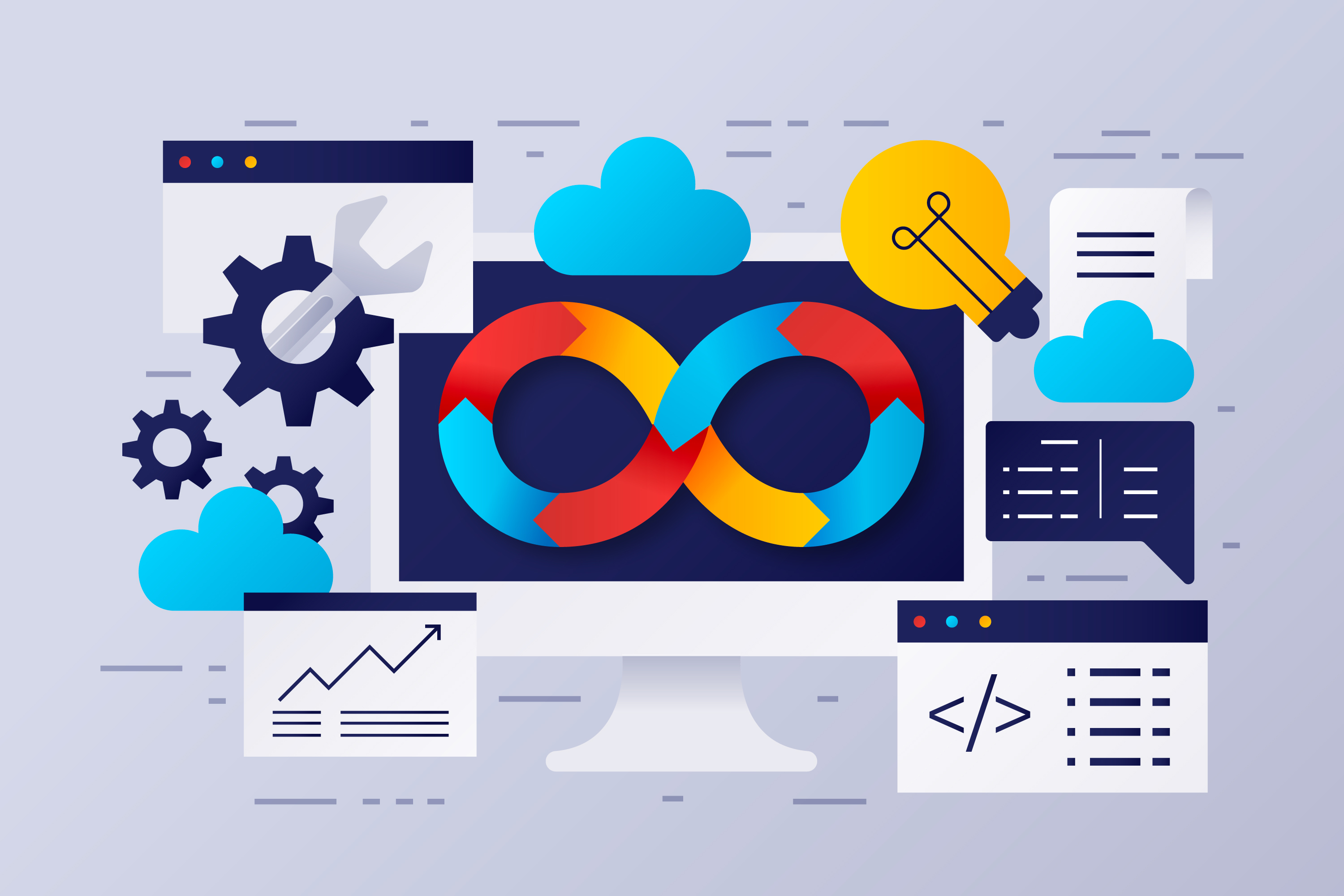Agile vs. DevOps – Similarities, Differences and Bottomline
What is Agile?
Agile is an approach to software development and project management that primarily underscores iteration and emphasizes speed of release, collaboration, and user feedback. Agile emerged as a response to the limitations that the Waterfall model posed, given its linear nature of product development.
In the early 2000s, when it debuted, its primary standout feature was the way it allowed development teams to rapidly react and respond to evolving market conditions and shifting customer demands.
The agile approach sees planning and design being executed in the initial stages while development progresses gradually in batches (or sprints), with the teams involved working closely – enter the collaboration bit.
Any change that arises is implemented immediately, and when paired with the waterfall methodology, agile enables the creation of a usable product version in a shorter timeframe.
This has several advantages, with the key one being that the software can be continuously improved to meet new customer needs or expectations in real-time. Agile does not represent a single strategy for development; rather, it is a culmination of various systems of practice, including Scrum, Kanban, and eXtreme Programming (XP), amongst others.
Agile is regarded as the unification of these approaches by the developers who fused them into an overarching set of principles. This led to the birth of the Agile Manifesto, comprising 12 principles on the foundation of 4 core values.

What is DevOps?
DevOps is an approach to software development that combines development (Dev) and operations (Ops) teams with the primary aim of streamlining and making the software delivery process more effective. Since communication and collaboration across all teams involved in the software product’s lifecycle are emphasized, the development lifecycle is effectively compressed.
Beyond the increased speed of deploying software and with fewer errors, the DevOps methodology also ensures that any updates made to the software product align with user needs and expectations as well as developer goals.
Similar to the Agile manifesto, there are three fundamental principles that dictate DevOps practices, and this is regarded as “The Three Ways”:
-
Systems Thinking: This principle is concerned with the system’s overall performance rather than simply the components that make up the system. What this implies is that on a deeper level, it is critically concerned with every stage of the software development cycle, right from coding and deployment to updates and maintenance.
-
Amplify Feedback Loops: Continuous looping of feedback ensures that the loop itself is, first of all, shortened to facilitate rapid and efficient corrections, using features like AI and DevOps monitoring. Feedback is consistently gathered at each stage of the software lifecycle, which effectively improves work quality and identifies and fixes recurring issues.
-
Culture of Continual Experimentation and Learning: A culture where responsibility is shared and transparency and collaboration are championed is a major highlight of the DevOps methodology. It is one that drives continual learning and trials amongst team members. DevOps encourages taking calculated risks, making mistakes, and learning from them.
Key Similarities Between Agile and DevOps
Agile and DevOps in spite of their different approaches, share certain similarities.
Objectives
On a foundational level, both methodologies emphasize improvement of the software development and delivery process. They also apply cross-functional collaboration to ensure continuous improvement and maintain feedback loops. Another core similarity they share, objectives-wise, is championing collaboration, continual improvement, and efficiency.
Quality Assurance
Testing is a big part of both methodologies to make sure the software is reliable. Both Agile and DevOps commonly implement unit tests, performance tests, functional tests, integration testing, and acceptance testing. This emphasis on testing any changes in code is to nip any issues that arise in the bud. This approach ensures that top-quality software is delivered.
Continuous Improvement
Both methodologies encourage product improvement via incremental changes made by teams in each iteration. Since this is a direct result of learning, improvement, and growth, both aim to foster such a culture. Agile commonly uses Scrum practices — such as retrospectives — to help teams reflect and identify areas of development.
DevOps teams, on the other hand, commonly monitor data and implement post-incident reviews to identify areas that can be made better.
Key Differences Between Agile and DevOps
Two key areas where DevOps and Agile differ are in their areas of focus and approach to enhancing the software development process.
Collaboration and Communication
Agile encourages structured and regular interactions to promote collaboration within development teams and with stakeholders.
For DevOps, taking away the wedge between the development and operations teams is important and key to facilitating regular communication through all stages of the software development cycle.
Project Management Approach
Agile focuses on a particular phase – the development phase and manages projects via sprints that are interactive to allow for rapid response to any change.
Conversely, DevOps extends beyond just the development phase to concern itself with the entire software delivery DevOps pipeline. In addition to integrating development, it also focuses on quality assurance, deployment, and operational strategies to manage the lifecycle of software delivery from end to end.
Impact on Software Development Lifecycle
Agile’s impact on the development phase is based on examining ongoing feedback and then making improvements in each iteration of the software while introducing and maintaining adaptability.
DevOps takes this several steps further by integrating operations and improving deployment and maintenance processes.
Bottomline
Summarily, Agile and DevOps both intend to achieve the same goals: fast-track development and boost the quality of software. So, one way or the other, talking about one would likely see the other come up in the conversation. Some teams prefer agile methodologies while others do not regard the benefits as much. And integrating a DevOps approach into the system could help fill any gaps for teams struggling with Agile. Overall, both methodologies have the same aim, and using each solo or combining the principles of both could be exactly what a team needs.


